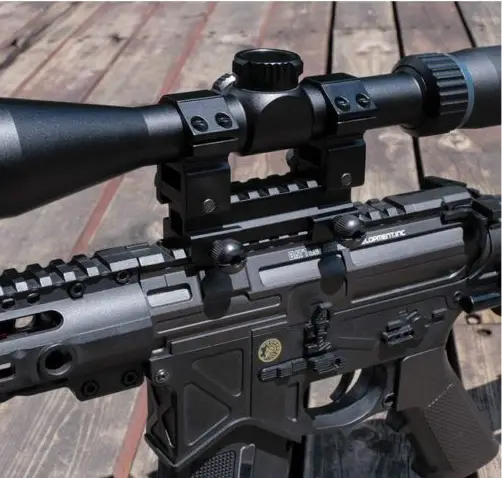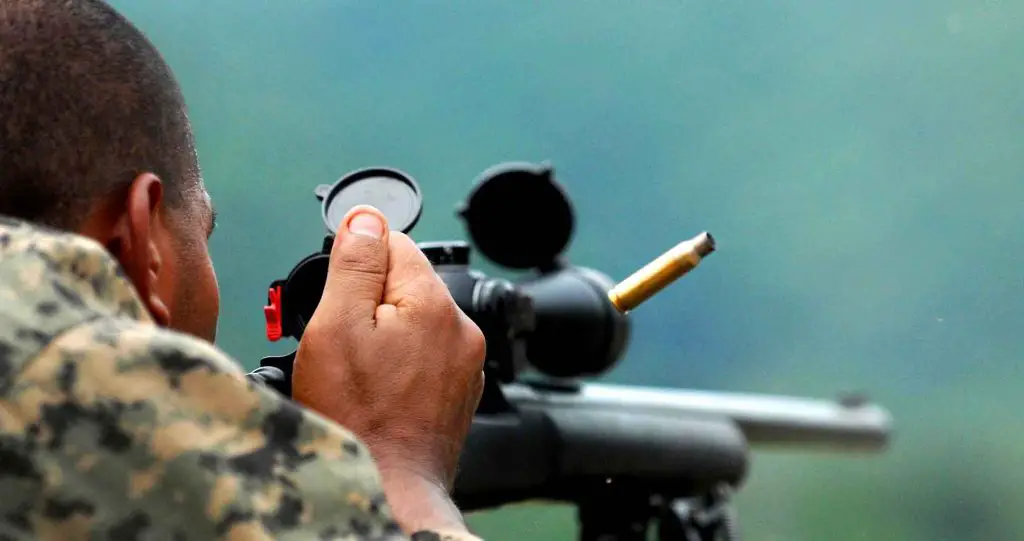
Centerfire vs Rimfire: Which Ammo Is Best?
There’s a lot to learn when you’re new to firearms, and that’s just keeping tabs on the weapons themselves.
Once you start diving into ammunition, the water gets even murkier, especially when you’re trying to decide between centrefire and rimfire cartridges.
What’s the difference between centrefire and rimfire ammunition?
The difference between these two types of ammunition is where the primer is located on them. In a centerfire, you’ll find it in the center of the casing base, and on a rimfire, it’s located in its rim, as each of their names suggests.
If you’ve seen the terms before but haven’t the slightest idea what centrefire vs rimfire ammunition is all about, this guide can lead the way. We’ll show you how they differ and their best and worst points, so you’ll know the right choice to make when choosing your ammo.
Components of a Cartridge
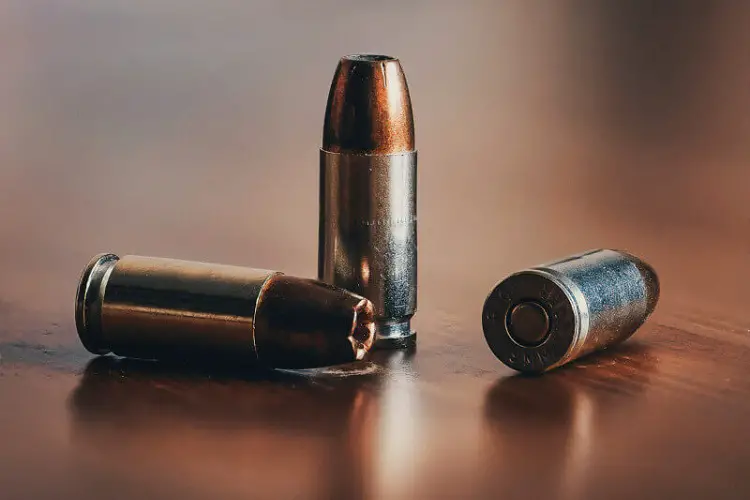
The inner workings of a cartridge are the first place to start when you’re trying to figure out the difference between centrefire and rimfire.
A cartridge features four key parts: the case, primer, propellant, and bullet, sometimes referred to as the projectile.
The primer position is what’s referred to when discussing rimfire and centerfire, but all other parts are the same regardless.
As the firing pin of the firearm strikes the primer, it makes an explosion that ignites the gunpowder so that the bullet can come out of the gun, and where this primer is located can change a whole lot.
The History of This Debate
To get a better idea of how these two competing ammunition types came to be, we can look back at their history. The rimfire type came first and made its big debut in the .22 round, which also had a reputation for being the first self-contained cartridge.
Before then, there was no powder inside the cartridge and so they relied on the primer to move it.
Traditionally, most cartridges featured this rimfire configuration, but around the late 1800s, the centerfire cartridge started to pick up steam.
This was more commonly used for larger bullets because it could fit more powder inside and had a greater kick to it, but there was still a lot of debate over which option was better.
Today, most ammunition comes in the centerfire configuration and it’s the most popular choice.
If your weapon uses any ammunition larger than .22, there’s a high chance it’ll be centerfire as well, and it’s commonly found in ammo for all kinds of guns including rifles, shotguns, and handguns.
What is Rimfire Ammunition?
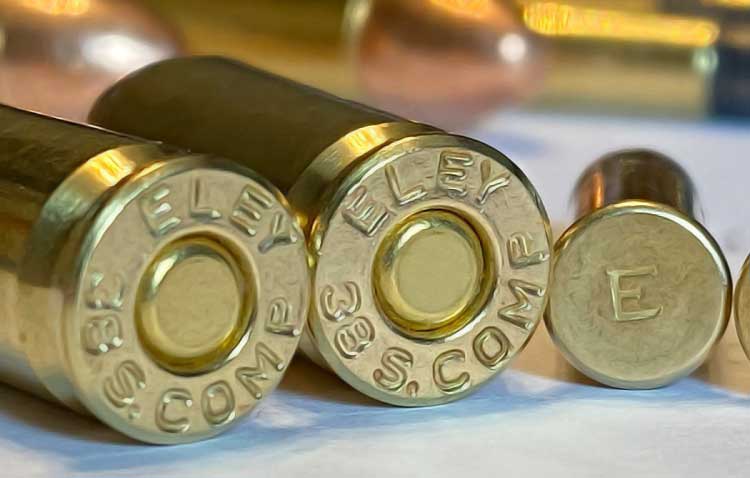
Rimfire ammunition was first designed in 1845 with the sole purpose of being used at indoor shooting ranges. Today, rimfire ammo is rarely available in sizes smaller than .22, and it predominantly uses black powder inside the cartridge.
When the smokeless powder was introduced late in the 19th century, it was found that there were better ways to get high-pressure projectiles by using this instead, which is why rimfire rounds started to lose popularity.
As a rimfire round only has thin brass for its construction, there are limitations to how much powder a large caliber round would require, so they tended to be used for smaller rounds only.
Pros
- Cost-effective: Rimfire cartridges are a lot cheaper than the alternative so you don’t have to spend a fortune on them. If you’re using them for something like training and target practice, it’s a more economical way to hit the range without wasting a lot of cash on centerfire cartridges.
- Low recoil: Firing a weapon that uses rimfire ammunition means lower recoil and less of an impact on the shooters. This can be a good thing for a newcomer to firearms who is still training or those who prefer minimal recoil.
Cons
- Only small calibers are available: You’re severely limited in the size of the caliber you can get a rimfire cartridge in which means it’s only suited to smaller rounds. These max out at .22 which is a shame for the average gun user and makes rimfire all but pointless to purchase.
- No reloading: You can’t reload rimfire ammunition so once the cartridge has been used, it’s worthless. If you like to reload your own ammo this is a letdown, although because the initial cost is so low, it’s not as much of a disappointment.
- Faulty ammo: As a general rule with ammunition, any time you fire something that’s of a smaller caliber, you increase the risk of a malfunction or fault. Considering these cartridges don’t come any bigger than .22 usually, the chance that at least a few of them in the box will be faulty is quite high.
What is Centerfire Ammunition?
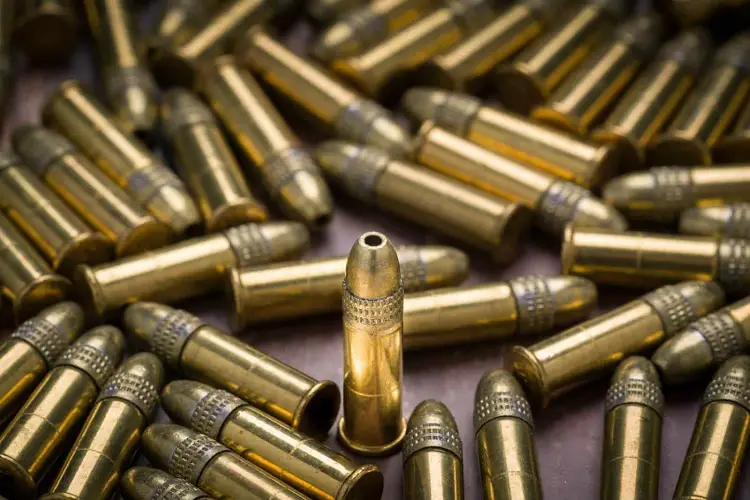
Centerfire ammunition is a cartridge that features the primer in the center of it, rather than on the rim.
These feature a metal cup that encompasses some sort of explosive which is placed into the top of a cartridge, and as the firing pin strikes this cup and ignites, the bullet is propelled out of the firearm.
Today, centerfire ammunition is considered the norm for both civilian and military use.
However, within this category, there are some differences in types, including the Berdan and Boxed rounds, but a firearm that’s designed to shoot centerfire ammo will usually have no issue being compatible with either.
Pros
- Suits all calibers: There’s a bigger range ff calibers available with centerfire ammunition so it’s suitable for all kinds of users and scenarios. You can use all sizes as well, with most people preferring the larger options that this type of ammo comes in.
- Reload capable: As this ammunition is reloadable, it might appeal to people who like to hand load. There’s no need to buy new cartridges as you can reuse the old ones which might end up saving some money as well.
- Reliability: When it comes to reliability, centerfire ammunition is the more trusted option, which is why people feel comfortable using it for purposes like self-defense. These aren’t the situations where you want to risk a failed round and waste yourself precious seconds.
Cons
- Expensive to purchase: The main issue with centerfire ammo is that it’s a lot more expensive than rimfire and if you’re using a lot of it, the costs can stack up. You’ll need to weigh up whether the benefits are worth this extra money and think about where and why you’ll be using them.
Which One Should I Use?
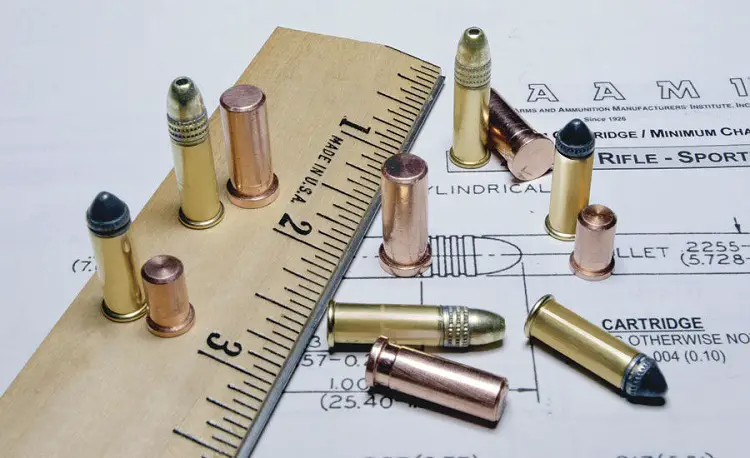
Firearm ownership and how you use your gun all come down to personal preference, and that includes the type of ammunition you employ.
Although there are far more advantages to be found in centerfire ammo, that doesn’t mean some people won’t get a lot of joy out of rimfire too.
It all depends on the situation and the type of firearm you’re using, so you should take it as it comes. For training and target practice, you might prefer rimfire, provided you can find something in the right caliber.
Otherwise, if you can afford the higher price, centerfire ammo is the most reliable and versatile option.
The Right Ammo Choice For You
There’s a lot to weigh up between rimfire and centerfire ammunition, and far more than just the design of the cartridge itself.
Not only will the shape and position of the primer make an impact, but the person using it and the firearm will have to be reflected on as well, so you need to consider it all to make the best choice.
Related Questions
The subject of ammunition is just as deep as the firearms themselves, and sometimes the terminology can get confusing.
If you still have questions about choosing the best ammo for your weapon, read on to see some commonly asked ones that might give you a push in the right direction.
How Much Ammo Do I Need?
If you’re planning on stockpiling ammunition for an emergency situation, the rule of thumb is to have at least 1,000 rounds for your weapon.
This includes the more common calibers of 9mm, 308 Winchester, 12 gauge, and 45 ACP, depending on the firearms you own and want to be prepared for.
What Does Caliber Mean?
In regards to ammunition and firearms, caliber is the measurement of the bore diameter of the gun or the diameter of the bullet or projectile that’s fired.
This measurement is usually represented in inches or millimeters but varies depending on the usage, like a .22 caliber or 9mm.
What Ammunition Does the FBI Use?
In 2018, the FBI award their latest 9mm pistol ammunition contract to Winchester Ammunition. The current duty round that the FBI uses is the PDX1 and their training ammunition is the Frangible SF rounds.
Resources:
![5 Best Pellet Guns Under $100 [2023] 7 bb rifle gun](https://www.armorholdings.com/wp-content/uploads/2022/11/bb-rifle-gun.jpg)
